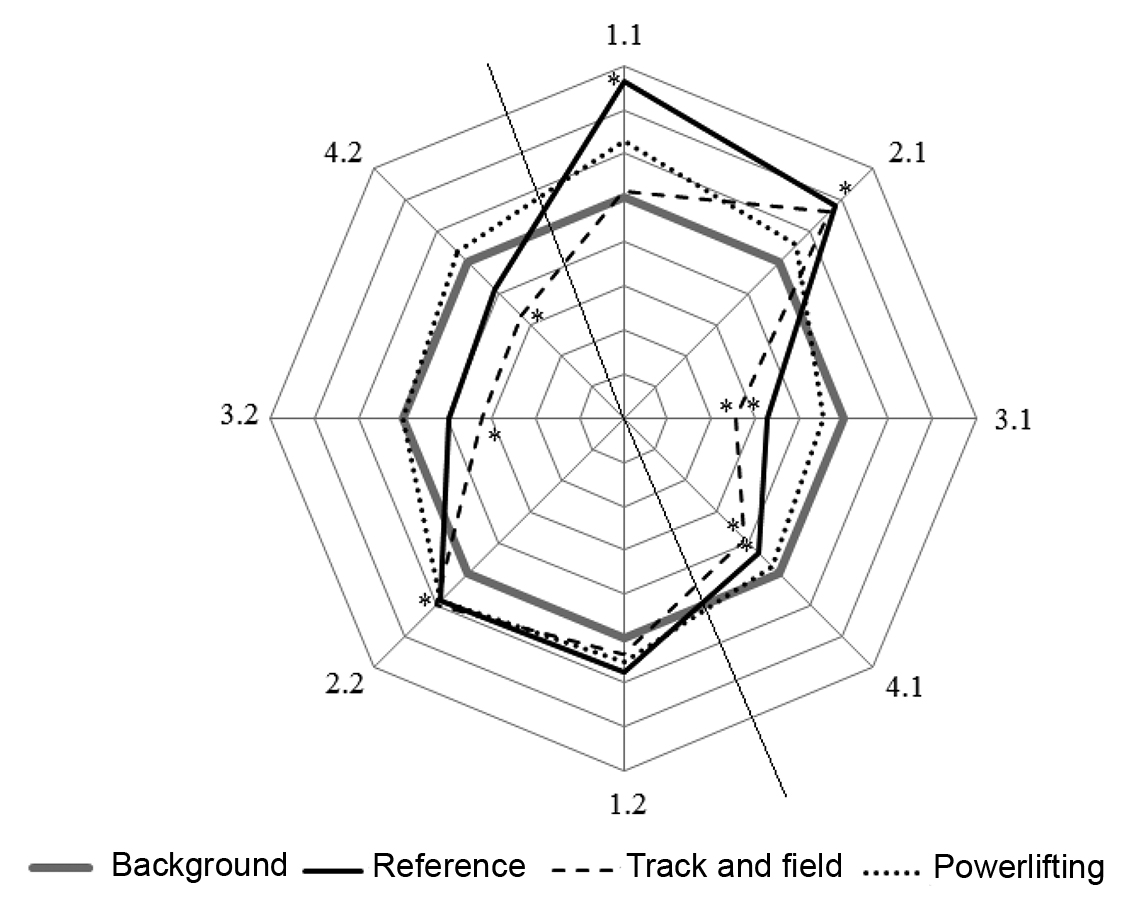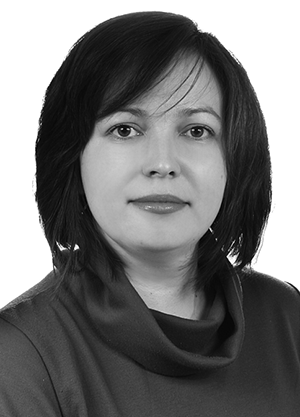Blood flow changes in carotid system in athletes during cognitive test
Фотографии:
ˑ:
Ph.D. A.V. Kabachkova1
Postgraduate student A.N. Zakharova1
Postgraduate student G.S. Lalaeva1
Postgraduate student T.A. Kironenko1
Student Yu.A. Buel1
Student K.G. Milovanova1
Professor, Dr.Med. L.V. Kapilevich1
1National Research Tomsk State University, Tomsk
Keywords: cognitive function, cerebral blood flow, exercise, athletes.
Introduction. Exercising has a positive effect on the improvement of selective attention [1, 7], spatial, associative and verbal memory [8, 9]. Endurance training positively affects brain plasticity changes [10]. Aerobic exercises promote better cognitive control and memory functioning [6]. However, there is no consensus among researchers with regards to the influence of sports training associated with long-term great, often maximum physical efforts and achievement of sports results on the state of cognitive functions [4]. The psychological theory of sports activity as a unity of two opposites - obstruction influence and obstruction immunity - has been developed since 1975. Studying athlete’s attention takes a significant part in it [5]. It is proved that athletic training with predominantly aerobic exercises serves as an important factor in maintaining a high level of short-term memory and attention [3, 4]. It was determined that velocity parameters of the blood flow in arteries of the head vary depending on the level of physical load [2, 5]. It is likely that adaptation of brain vessels to loads of different nature may influence cognitive performance.
Objective of the research was to study the blood flow characteristics in the carotid system of athletes of cyclic and endurance sports in cognitive tests.
Methods and organisation of the study. The study involved athletes of cyclic and endurance sports (n=40) who constituted 2 study groups with equal number of athletes in each (track and field and powerlifting). All the subjects (males) were at least Candidates for Master of Sports. The reference group consisted of 40 students of the main health group attending physical education classes twice a week. All subjects are aged 18-23 years. Impact of stress factors caused by tests or exams was ruled out. The study was conducted in the morning.
Rheographic study of the brain was conducted using the hardware and software complex “Valenta” (LLC Neo Company, Russia), in a state of relative rest (background recording) and during successful performance of a cognitive test in the front mastoidal lead characterizing the internal carotid artery system. A battery of tests allowing to assess the amount and distribution of attention was used during the cognitive test.
The data were statistically processed using STATISTICA 8.0 software, including the calculation of descriptive sampling parameters, normality of data distribution test (Shapiro-Wilk test) and comparative analysis of dependent (t-test for dependent samples, Wilcoxon matched pairs test) and independent samples (t-test for independent samples, Mann–Whitney test). P≤0.05 was taken as statistically significant difference.
Results and discussion. Indicators of blood supply, outflow, inflow as well as the inflow-to-outflow ratio in athletes (track and field and powerlifting) in the state of relative rest do not have statistically significant differences with those in the reference group (р>0.05). However, statistically significant changes in each group were revealed during the cognitive test performance (р≤0.05).
Blood supply indicators. An increase in pulse blood supply in the carotid system was noted both in the left and in the right parts in all the observed groups during the battery of attention tests. A statistically significant change of the rheographic index (RI) on the left side was observed in the reference group (р≤0.05), the increase of the left-side RI was about 33%. The increase of the right-side RI was statistically insignificant (р>0.05) – less than 15%, so the degree of lateralization of the brain function (AC) was 25.7% (normally AC is not more than 20%). RI increase on the left side was 3% in representatives of cyclic sports; it was 7% on the right side (without lateralization of the brain function). RI increase on the left side in representatives of endurance sports was 26%, on the right – 10% (without lateralization of the brain function). Normovolemic type of rheoencephalogram was registered in the group of track and field athletes (left and right brains) during the cognitive test. Hypervolemic type on the left and on the right was identified in the group of powerlifters. As for the reference group the hypervolemic type was observed on the left and the normovolemic type on the right.
Vascular tone. The tone of large and medium-sized arteries in the observed groups was within normal limits during cognitive tests (elastic modulus – 16-18%). A statistically significant increase of indicators reflecting the tone of large and medium-sized arteries in the left carotid system was registered in the reference group (р≤0.05) when compared with the indicators of the background recording. For example, the elastic modulus changed by 36%, and the maximum fast and slow blood filling velocity – by 27% and 26%, respectively. The tone of large and medium-sized arteries of endurance sports athletes did not change, whereas a statistically significant increase of the elastic modulus was registered in the representatives of cyclic sports – by 32% and 19% (left and right sides, respectively).
During cognitive tests the arteriolar tone decreased in the observed groups. Statistically significant changes (р≤0.05) were registered in the left carotid system in the reference group – a reduction by 52% (AC – 23%). Statistically significant changes of arteriolar tone indicators in the group of track and field athletes were registered on both left and right sides (93% and 55% reductions respectively). No statistically significant changes of indicators were revealed in the group of powerlifters. Reduction of bisferious index (BI) in the representatives of cyclic sports was statistically significant when compared with the indicators of the endurance athletes. Thus, norm-resistive types of rheoencephalograms were identified in the reference group and that of powerlifters (BI being from 40% to 70%). Hypo-resistive type was identified on the left side (BI less than 40%) and norm-resistive – on the right in the group of track and field athletes.
Blood outflow. Venular tone changes in different ways during cognitive tests in the observed groups. The diastolic index (DI) does not change significantly (р≤0.05) in the reference group and is within the norm. A reduction of DI by 17% on the left side and by 28% on the right side takes place in the athletes of cyclic sports, while an increase of the indicator up to 85% (10% higher than the norm) is noted in the representatives of endurance sports. This indicates a slight difficulty in venous blood outflow from the right side in the group of powerlifters.
Conclusions
- The data obtained indicate that regular sports training sessions modify the nature of hemodynamic transformations under cognitive load (see Figure 1). Increased blood supply in the left carotid system is observed in untrained people during cognitive tests. This is accompanied by an increase in the tone of large and medium-sized arteries and a decrease in the arteriolar tone; the nature of blood outflow remains unchanged.
- A pronounced increase of blood supply in both sides (to a greater extent on the left) as well as a decrease of blood outflow while vascular tone is constant were observed in powerlifters. It can be assumed that such a hemodynamic response is mainly due to the change of tone in extracranial vessels.
- Track and field athletes, on the contrary, demonstrated expressed divergent responses of the brain vessels – an increase of the tone of large and medium-sized arteries and a decrease of the arteriolar tone (mostly on the left) combined with a reduction of the blood outflow on the right did not lead to significant changes of blood supply in the carotid system in the long run.
- It can be assumed that sports training causes restructuring of the cerebral blood flow regulation. Regular cyclic load forms coordination of reactions of cerebral vessels, providing a constant level of blood supply to the brain under the conditions of cognitive load. Static load in powerlifting, on the contrary, reduces the ability of the brain vessels to respond to external factors resulting in the cerebral blood flow becoming largely dependent on extracranial factors.

Figure 1. Functional profile of the reaction of the cerebral blood flow in the carotid system during cognitive tests of athletes
1-4 – calculated indices (1 – rheographic index, 2 – elastic modulus, 3 – bisferious index, 4 – diastolic index); 1 and 2 – left and right indicators, respectively (for example, 1.2 – rheographic index of the right side).
Figure 2. Muscle bioelectrical activity during study group players' shot performance
References
- Kabachkova A.V. Reaktsiya regionarnogo krovotoka nizhnikh konechnostey na stepergometricheskuyu nagruzku u sportsmenov (Reaction of lower limb regional blood flow to stepergometer load in athletes) / A.V. Kabachkova, J.S. Frolova, L.V. Kapilevich // Teoriya i praktika fizicheskoy kultury. – 2014. – № 10. – P. 56–58.
- Koshel’skaya E.V. Fiziologicheskie i biomekhanicheskie kharakteristiki tekhniki udarnotselevykh deystviy futbolistov (Physiological and biomechanical characteristics of targeted kicking technique in football) / E.V. Koshel’skaya, L.V. Kapilevich, V.N. Bazhenov, V.I. Andreev, O.I. Buravel // Byulleten' eksperimental’noy biologii i meditsiny (Bulletin of experimental biology and medicine). – 2012. – V. 153. – № 2. – P. 235–237.
- Romanov Yu.N. Lineynye pokazateli tserebral’nogo krovotoka v zavisimosti ot tipovykh razlichiy gemodinamiki i asimmetrii v sisteme integral’noy podgotovki kikbokserov (Linear parameters of cerebral blood flow depending on standard hemodynamic and asymmetric differences in integrated training of kickboxers) / Yu.N. Romanov, G.I. Mokeev // Uch. zapiski unta im. P.F. Lesgafta. – 2013. – №1(95). – P. 128–134.
- Sirotin A.B. Vliyanie razlichnykh urovney dvigatel’noy aktivnosti na kognitivnye funktsii molodykh muzhchin (Young men's cognitive functions depending on different motor levels) / A.B. Sirotin, L.M. Belozerova, V.G. Cherkasova // Lechebnaya fizkul’tura i sportivnaya meditsina. –2011. – № 9. – P. 30–33.
- Tkacheva M.S. Osobennosti funktsionirovaniya poznavatel’nykh psikhicheskikh protsessov v razlichnykh vidakh sporta (Functioning features of cognitive mental processes in various sports) / M.S. Tkacheva // Izvestiya Saratovskogo universiteta. Novaya seriya. Akmeologiya obrazovaniya. Psikhologiya razvitiya. – 2012. – V. 12. –№ 4. – P. 65–69.
- Chaddock L., Voss M.W., &Kramer A.F. Physical activity and fitness effects on cognition and brain health in children and older adults // Kinesiology Review. – 2012.– N1. – P. – 3745.
- LiuAmbrose T., Nagamatsu L.S. et al. Resistance training and executive functions: a 12month randomized controlled trial // Archives of Internal Medicine. – 2010. – Vol.170.– N 2. – P. 170178.
- Nagamatsu L.S., Handy T.C., Hsu C.L., et al. Resistance training promotes cognitive and functional brain plasticity in seniors with probable mild cognitive impairment// Archives of Internal Medicine. – 2012. – Vol.172. – N 8.– P. 666668.
- Nagamatsu L.S., Chan A., Davis J.C., et al. Physical activity improves verbal and spatial memory in older adults with probable mild cognitive impairment: a 6month randomized controlled trial // Journal of Aging Research. 2013:861893.
- Nagamatsu L.S., Flicher L., Kramer A.F. et al. Exercise is medicine: For the body and the brain // British Journal of Sports Medicine. – 2014. – Vol.48. – N 12. –P. 943944.
Corresponding author: kapil@yandex.ru



